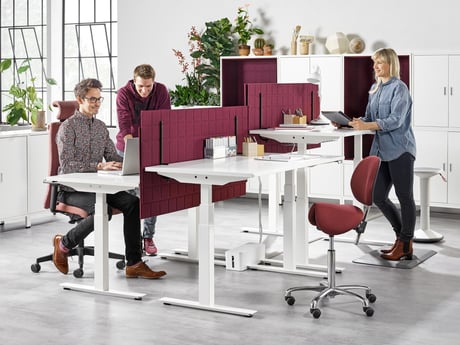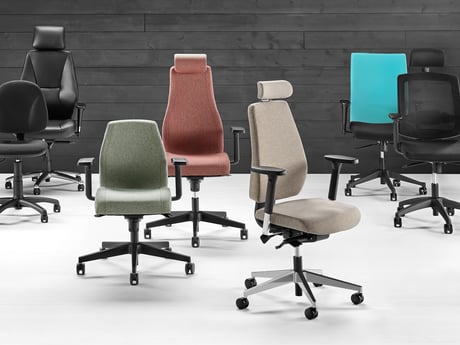How to create a collaborative workspace to improve teamwork

According to the Steelcase Global Report on Engagement and the Global Workplace, 94% of employees who considered themselves to be highly engaged and highly satisfied at work said they were able to work in teams without being interrupted. To make this possible, the office must provide plenty of collaborative meeting spaces that allow colleagues to work together more easily.
Collaborative spaces give colleagues a place to get together in a more relaxed setting, leading to impromptu meetings and brainstorming sessions. They can provide an opportunity for people from different teams to mingle and come up with ideas that may never have had the chance to develop otherwise.
5 design tips for a successful collaborative workspace
Different spaces for different needs
Try to provide a variety of different collaborative spaces throughout the office. A small seating cluster in the corner of the office will be ideal for some quick meetings while other team get-togethers will require a more private space with a proper meeting table and chairs. Make sure that there are enough spaces that one will be free when needed without employees having to book the space well in advance. Providing sufficient meeting areas will prevent teams being interrupted by other colleagues looking for a space or distracted by what’s going on in the rest of the office.
Flexible seating options
The most successful casual meeting spaces will offer plenty of flexibility. Collaborative office furniture needs to provide several different seating options including plenty of soft seating. Choose furniture that is easy to move around so employees can reconfigure the space to suit their purpose. Booths are a popular choice, offering comfortable seating combined with privacy and a large workspace.
Charging facilities
Having plenty of accessible power outlets is essential so that employees can charge their laptops and mobile devices while they work. USB sockets are a smart alternative if the space doesn’t lend itself to power sockets. Outlets should be available near seating areas as well as integrated into meeting tables. Staff should never have to rearrange the furniture just to plug in their devices. It goes without saying that Wi-Fi must be fast and reliable.
Support tools for sharing ideas
To make the space suitable for all types of meetings and teamwork, think about what equipment would support teamwork. An effective collaborative workspace will include whiteboards for brainstorming and a smart screen for sharing digital content.
Aesthetics
Informal spaces are an opportunity to bring some more interesting and fun design elements into the office. The space should inspire creativity and strike a careful balance between aesthetics and comfort. A stimulating colour scheme with inspiring artwork or design features is important, but you should also focus on getting the right lighting and acoustics. Natural light is best if possible while smart acoustic panels improve the soundscape by reducing the disruptions from surrounding areas and muffling conversations to provide more privacy.



